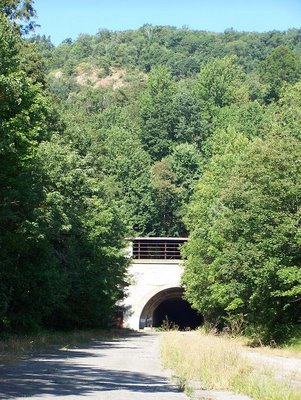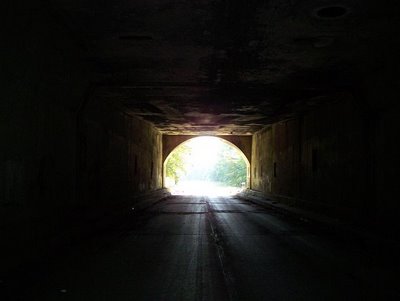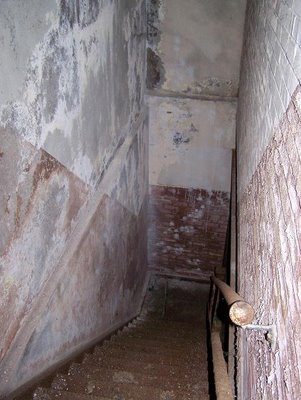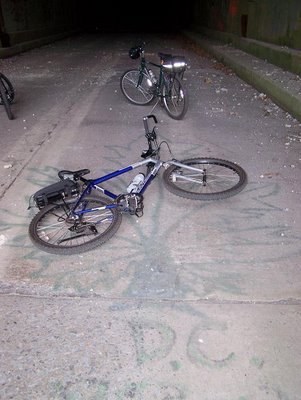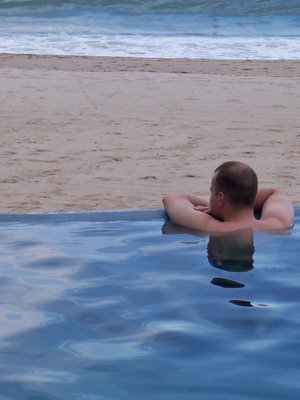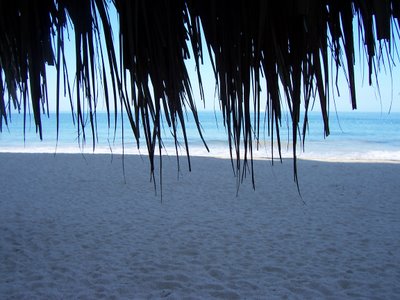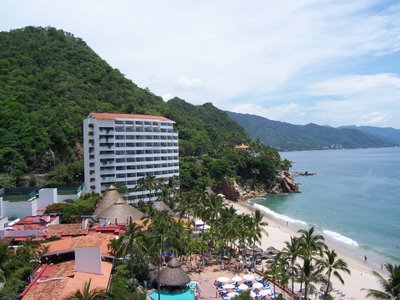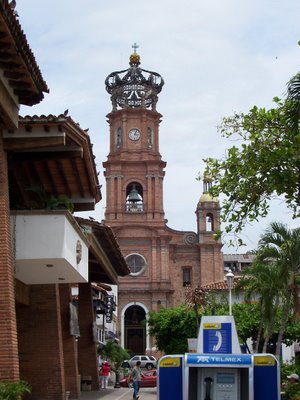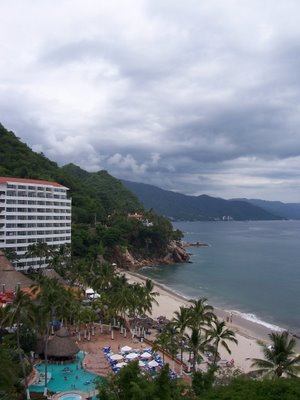Early yesterday morning the three of us loaded up and headed to South Central PA to take in the two gems of the Abandoned Turnpike: the tunnels. Along the route of the old highway are two old highway tunnels that cut under the local mountain ranges. The longest of the two, Sideling Hill, is over a mile long. Ray's Hill, the second tunnel, is around 3/4 mile. The Pike itself is somewhat hard to find. If you want to visit it call me. Don't trust directions you found online. Upon arrival I was kind of surprised that there actually was a highway out there in the middle of nowhere. The pavement was in bad condition and vegetation had grown up all over the place, but there it was! One of the nice things about the Pike is that, although it is in a pretty hilly area, the highway is graded for Interstate traffic. That means that there are no steep hills, only long gentle ones. Sideling Hill lies a short ride away from the parking area, and my neurotic mind had been pondering everything that could go wrong in the belly of that beast for days. I had developed a safety system that hinged on redundancy. Bicycle headlamps were backed up by Maglites which were backed up by glow sticks. Two separate individuals would contact authorities if we weren't heard form by a set time. Like I said, neurotic. As it turned out, Sideling Hill turned out to be much closer to "cool" than to "horrific." Several web pages touted it as being so long that you cannot see light at either end when in the center. That may be true, if you visit at night. It does get dark though. There were rooms at either end of the tunnel leading up into the ventilation and service areas above. Unfortunately the stairways were so rusted that we couldn't venture beyond the first floor rooms. The tunnel itself was long and dark. Its subterranean chill was a welcome break from the summer morning. The rooms at the far end proved to be equally inaccessible. Beyond Sideling Hill we faced several miles of deteriorating highway before reaching Ray's Hill tunnel. To our chagrin, the near side access room's doors were welded shut. We ate lunch on the near side and then rode through. The ride was fun for sure, and the tunnels were great, but as far as adventure goes the trip had been lacking. The meandering subject matter of the local graffiti kept us entertained. At the far end of the tunnel we found more welded doors, and were about to head back to the car until Roverine pointed out a trail of sorts leading up a steep hill along the tunnel's entry way. It wasn't long before Baby Dague and I scampered up the hill and gained access to the tunnel's second story maintenance area by way of a ladder and an unsecured window. The inside was amazing. There were giant ventilation fans, maintenance tunnels running on top of the tunnel for its entire length, and the amazing "triangle room." I felt like I was in Lost. The entire place was littered with paintball and airsoft pellets. Initially we thought some kids had had some fun there, but I recently learned that the Army sometimes uses the buildings to train troops before they head to Iraq. After exploring for a bit we mounted our bikes and headed for home. On the way back Baby Dague showed us why he can always fall back on a circus career, and we decided to blow our glow stick backups on an impromptu rave in the heart of Sideling Hill. It was a great trip all around and I plan to go again. Baby Dague and I would love to go at night. I have attached some pics for your viewing, unfortunately most of the ones we took can't be posted because the local graffiti probably isn't appropriate for public viewing.
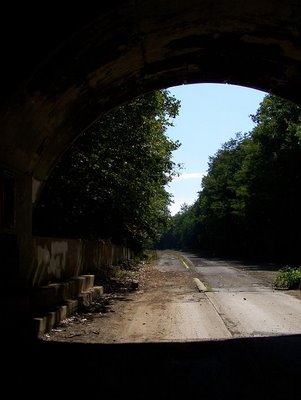 Inside Sideling Hill, looking back at the Pike.
Inside Sideling Hill, looking back at the Pike.
 Ever get the feeling that you're being watched?
Ever get the feeling that you're being watched?
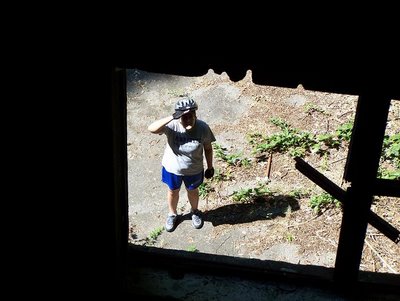 Looking down at Roverine from the Ray's Hill complex.
Looking down at Roverine from the Ray's Hill complex.
 Baby Dague showing off his ninja skills.
Baby Dague showing off his ninja skills.
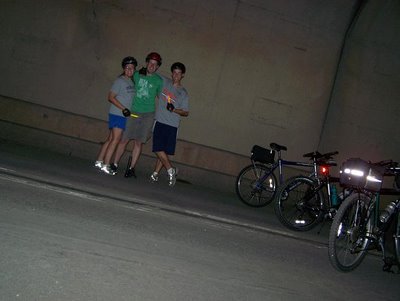 Deep inside Sideling Hill.
Deep inside Sideling Hill.
